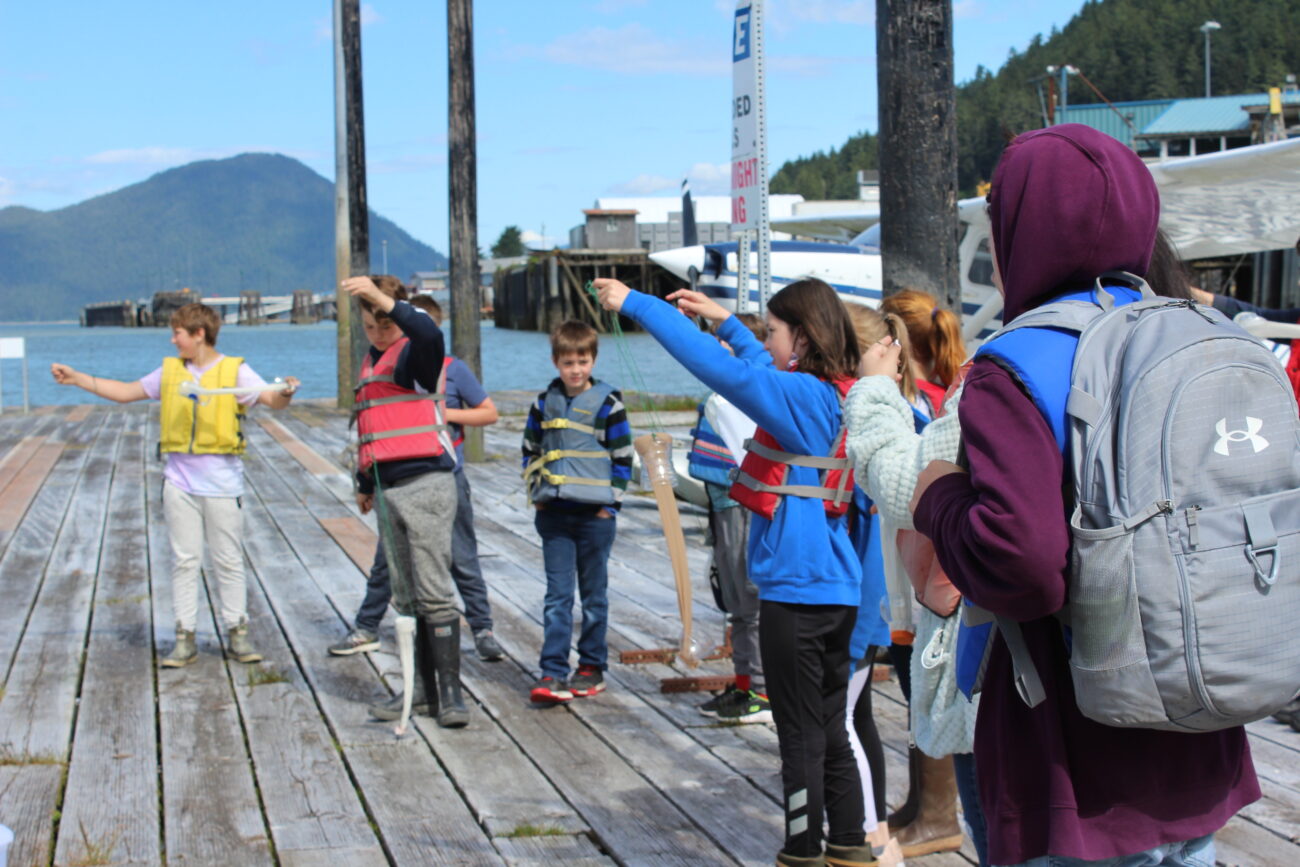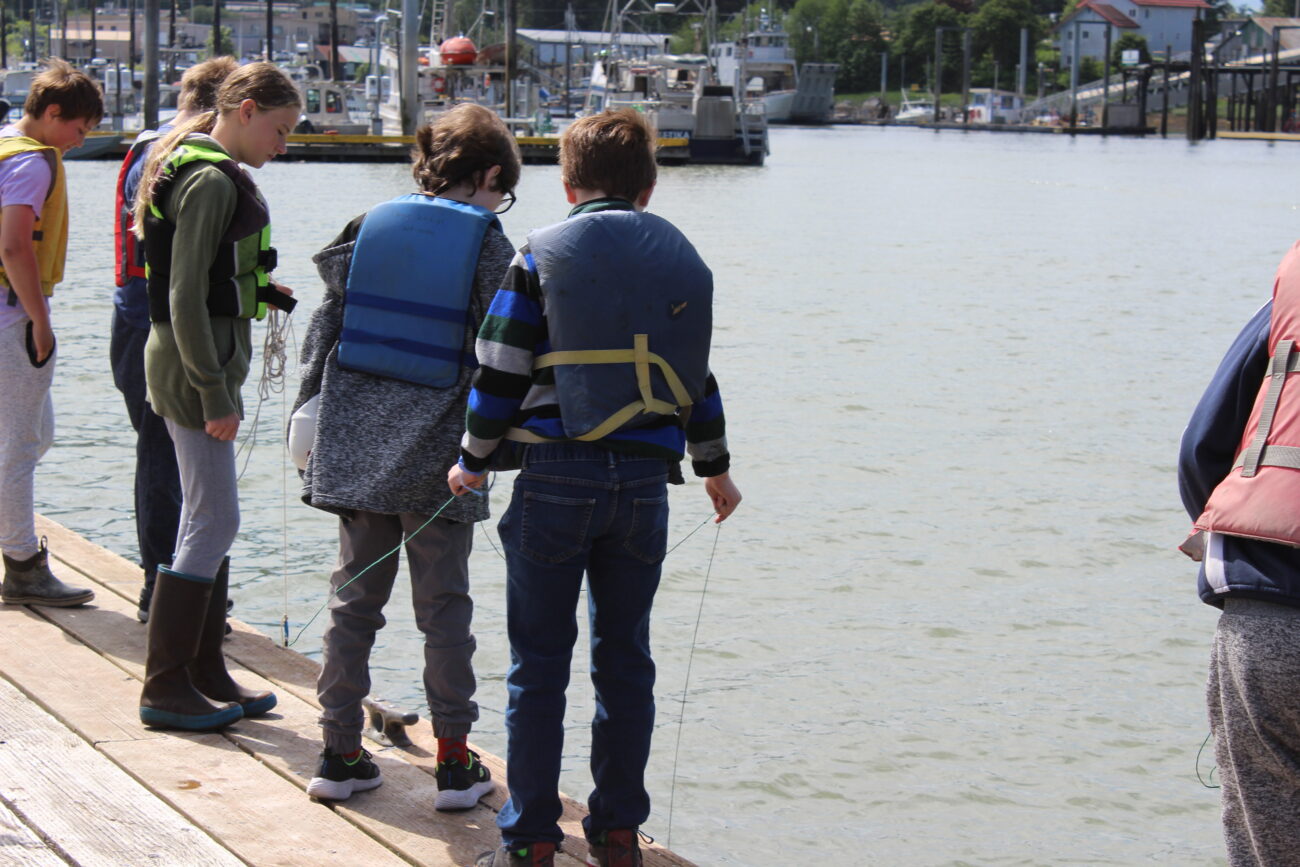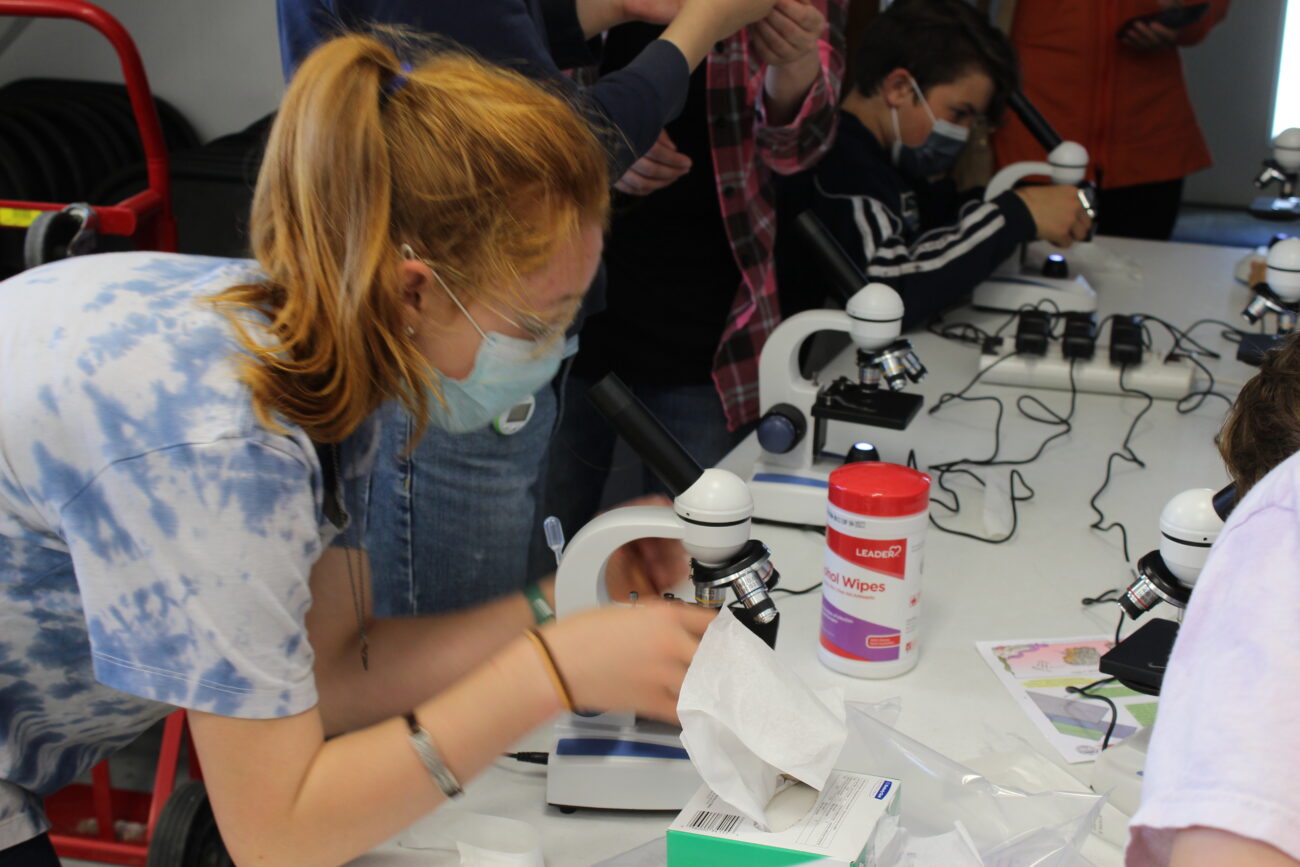
(Sage Smiley / KSTK)
School’s out for the summer… but that doesn’t mean the kids aren’t learning. KSTK attended an afternoon of a science and arts camp put on by Wrangell’s local tribe and Sealaska Heritage Institute.
The mood is buzzy as we make the walk from the local Tlingit tribe’s cultural center to Wrangell’s Reliance Harbor. Sixth-grader Devin Aleksiev is already wearing his life jacket, which he demonstrates he can put on even if it’s already buckled.
“It’ll hurt like heck on your wrist if you have a watch on,” Aleksiev says, pausing to take off his watch. He says he likes everything about culture camp and is happy to be here.
“Just wasn’t happy when I woke up,” he adds, wryly.
About 15 middle schoolers (entering sixth through eighth grade) are participants in Wrangell’s 2021 Culture Camp. The camp has a STEAM focus — that’s science, technology, engineering, art, and math, helping Wrangell kids build cultural knowledge and learn about careers in the community.
“Last year was the first year and we did a virtual summer camp last year, because of COVID” says Paul Leininger. He’s a Juneau-based STEAM project coordinator with Sealaska Heritage Institute. “This year, we wanted to get out and reach out to all six communities, instead of bringing kids to Juneau during COVID. We thought it would be a great opportunity to send everyone out — to send adults out to the communities and serve the kids where they are.”
So SHI is running similar camps in Juneau, Sitka, Hoonah, Angoon and Klawock, with help from a federal Alaska Native Education Program grant.
“They all have their own local twist,” Leininger says, “All doing something unique. [We’re] really excited to see how everyone is able to get to experience their own community and STEAM careers in their community.”
It’s mostly sunny out, with a stiff breeze. Strange contraptions that look like jellyfish made of plastic bottles and nylon stockings float from the hands of a few of the kids. Aleksiev points to one, and explains the exercise: “We made plankton nets, and we’re gonna catch plankton and then we’re gonna look at them through microscopes.”
Hopefully, the jellyfish-like contraptions will concentrate microscopic water critters into a little sample bottle. Camp participants will take that water back to the cultural center, where half a dozen microscopes sit ready.

Aleksiev is excited for the opportunity to look at something alive through a microscope.
“I’ve gotten a microscope before,” he says, “But it sucked. And all it gave me to look at was dandruff. Literally, it just gave me dandruff to look at.”
Down on the float plane dock, Kim Wickman rounds up the campers to explain the experiment. The kids drop the makeshift nets off the dock, and shuffle along single file, scraping the water surface with their stockings.
Wickman is the Indian General Assistance Program coordinator for the Wrangell Cooperative Association. It’s a wide-ranging job. Today, she’s a plankton-collecting and analyzing expert.
After putting in her dues trawling back and forth, eighth-grader Phebe Garcia steps away from the side of the dock. She says she appreciates the opportunity to learn about different careers in the sciences and other outdoor fields, even if she doesn’t see herself ending up in a fieldwork sort of job.
“I don’t really like going outside,” Garcia says. “If I get bit by a bug I swell up, so I like staying inside. I think it’s fun, though, to learn about this stuff. And I think other people [here] want to work outside.”
Trying to catch microorganisms in homemade contraptions is just one of the wide variety of activities on the schedule of culture camp. Kids heard presentations from the Forest Service and a local tour operator. They paddled canoes, made their own canoe paddles, listened to traditional stories and songs, and had Tlingit language lessons throughout the week. This culminates in an overnight trip to Kaats’litaan, Old Willow Town, the historic Wrangell site.
Back at the cultural center, Tlingit bead artist Florence Marks Sheakley sits bent over a partially complete blue flower pattern, about the size of a palm.
“They want me to do beadings,” Sheakley says, pausing her needle. “So that’s what I am doing with the kids. I’m teaching them how to bead.”
Sheakley says she’s been coming to Wrangell’s culture camps for a few years now. Under her watchful eye, the kids get to make their own tiny bead designs.
In another corner of the building, with, hopefully, plankton-filled water bottles in tow, six kids at a time stoop over microscopes, overseen by IGAP coordinator Wickman.

“So you see the little guy that’s moving up here in this kind of corner,” Wickman says, peering into a microscope. “That is a Tintinnid. And he’s actually zytoplankton, and actually as he’s moving, he’s hunting. So he is trying to find other little creatures that he can absorb into himself for lunch.”
“Oh my gosh!” exclaims someone at the table.
Eighth-grader Ben Houser squints through one eye into his microscope.
“Basically just a bunch of debris,” Houser narrates as he adjusts the slide over the microscope light. “Small plants… I think there’s a bunch of little squiggly lines that — everything’s moving because there’s too much water in my slide.”
It’s sort of what he was hoping to identify on his microscope slide.
Houser describes his dream slide: “Seaweed, maybe a shark. We could always wish.”
It remains to be seen what Houser will call his favorite moment from culture camp, although realistically, it won’t be finding a shark in a sample of Wrangell harbor water.
A family picnic celebrating the end of this year’s Wrangell STEAM Culture Camp will be held at 5 p.m. Saturday, June 12 at the City Park Pavilion. KSTK will air reflections from the culture camp attendees in the coming weeks.
Get in touch with KSTK at news@kstk.org or (907) 874-2345.











